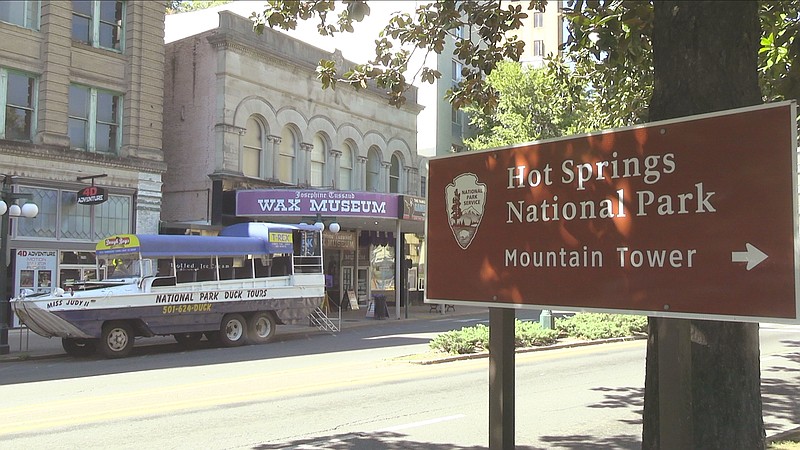Revenue from tourism in Garland County increased 2.4% from pre-pandemic levels, according to an annual report released Tuesday by Visit Hot Springs.
Visit Hot Springs CEO Steve Arrison said the report was not done for 2020 due to the effect the covid-19 pandemic had on the economy.
"We do an annual report," he said. "The only year we didn't do it was '20, which was the year of covid. ... It not only helps us sort of gauge how the industry is doing, but it really helps us with people that want to bring a hospitality business in.
"It's something really you can send to hotel developers, restaurateurs, people with attractions they want to bring in, so it's sort of a two-fold report. And we usually wait and release it after the state comes out with their numbers, so we can include those in there, as well."
InVeritas, a Little Rock-based company, researches and compiles the data, Arrison said.
"They pull their own numbers. They pull numbers from the state. They pull numbers from all our [businesses] like Garvan [Woodland] Gardens is in there, Oaklawn [Racing Casino Resort]'s in there. They get in touch with them and get all their information, and they put it in a package together for us."
While the pandemic did have an effect on the economy in Garland County, Arrison said it was much less devastating than it was for other places.
"All in all ... it was a very good year," he said. "I mean, we've recovered from covid. It really didn't hurt us as badly as it hurt a lot of other places."
There was only an 11% decrease from 2019 to 2020, Arrison said, despite the Hot Springs Convention Center remaining closed throughout the majority of the year.
"It was pretty incredible," he said. "We were up for the last six months of the year. And that was with zero meeting business because, if you remember correctly, the convention center was pretty well shut down."
The report said the tourism industry garnered $63.1 million in tax revenue for state and local governments and supported nearly $161 million in wages for 6,400 travel-related jobs, an increase of 30% from 2019, when the last local report was compiled. The report noted $8 billion was spent on tourism-related industries statewide in 2021 with $1.1 billion generated in local, state and federal tax revenue.
"I think the number that really jumps out at me is that 10% of the Arkansas tourism tax that's paid around the whole state, 10% of that comes from Garland County," Arrison said.
"So you know, we're the number one tourism destination in the state, and I always get in an argument with Little Rock. 'Well, we collect more money than you do.' 'Well, you've got government; you have corporate. You have all that other stuff.' Pretty much ... we're a tourism-based economy here," he said.
Five counties account for more than half of the state's income from travel-based industry -- Pulaski, Benton, Garland, Washington and Sebastian. Of those, Garland County ranks third in the five categories used in the report -- travel expenditures, travel-generated payroll, travel-generated employment, travel-generated state tax, and travel-generated local tax.
"We don't have corporate headquarters," Arrison said. "We don't have Walmart. We don't have the state Capitol. ... I think it's incredible that we do what we do. I think it's a testament to our restaurants and hoteliers that ... even through these tough times -- I mean, their numbers are good, but some of them still aren't open as many days as they used to be.
"They've changed their menus. They've adapted to the new environment where you have some days [where] you can't get this kind of meat or the chicken that you've always served, or you've got to change your operating hours. I think it's incredible."
The report shows the hospitality tax collections in 2020 dropped from $6,964,879.41 to $6,181,700.08, but 2020 collections increased to $8,041,374.84, a 14.5% increase over 2019 and 30.1% increase over 2020.
The city's hospitality tax from lodging increased 28.1% over 2019 to $2,079,379.94 (56.99% increase over 2020). Restaurant collections increased 23% from 2020 to $5,961,994.90 (12% increase over 2019).
Arrison said the current year looks to end on a positive note as well.
"Our meetings, it's incredible," he said. "We have one meeting after the other after the other, and not only is that great, but it's like Spa-Con, the best attendance they've had ... in almost the six years of it, I think.
"All of our meetings, their attendance is up. People want to meet; people love to come to Hot Springs. There's other great meeting places within the state, within the region, but they love to come here because there's so much not only for them to do, but for their family to do while they're in the city."
